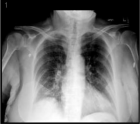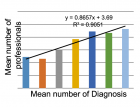Table of Contents
Developing an Explainable AI System for Digital Forensics: Enhancing Trust and Transparency in Flagging Events for Legal Evidence
Published on: 3rd July, 2025
Advanced forensic approaches are necessary to handle digital crimes, as they must provide transparent methods that foster trust and enable interpretable evidence in judicial investigations. The current black-box machine learning models deployed in traditional digital forensics tools accomplish their tasks effectively yet fail to meet legal standards for admission in court because they lack proper explainability.This study creates an Explainable Artificial Intelligence (XAI) system for digital forensics to improve flagging events as legal evidence by establishing high levels of trust and transparency. A digital evidence system employs interpretable machine learning models together with investigative analysis techniques for the detection and classification of computer-based irregularities, which generate clear explanations of the observed anomalies.The system employs three techniques, including SHAP (Shapley Additive Explanations) alongside LIME (Local Interpretable Model-agnostic Explanations) and counterfactual reasoning to deliver understandable explanations about forensic findings, thus enhancing investigation clarity for law enforcement agents and attorneys as well as stakeholder professionals.The system performs successfully on actual digital forensic datasets, thus boosting investigation speed while minimizing false alerts and improving forensic decision explanations. The system must demonstrate GDPR and digital evidence admission framework compliance to maintain legal and ethical correctness for usage in court procedures.Forensic digital investigations need explainable Artificial Intelligence as an essential integration for creating reliable and legally sound practices.
Challenges in Y-DNA Recovery from Fabric: Effects of Environmental Degradation and Implications for Forensic Casework
Published on: 4th July, 2025
Y-chromosomal DNA (Y-DNA) testing plays a critical role in forensic investigations involving male suspects, especially when traditional autosomal DNA evidence is insufficient or degraded. This review explores how different environmental factors—such as heat, moisture, Ultraviolet (UV) exposure, and microbial activity—impact the ability to recover Y-DNA from fabrics commonly found at crime scenes, including cotton, polyester, and denim. The study found that longer exposure to harsh environments, especially humidity and UV radiation, led to a sharp drop in the amount and quality of recoverable Y-DNA. The type of fabric also influenced results, with cotton generally retaining more DNA than synthetic materials like polyester. These findings reinforce the need for quick evidence collection and proper storage to preserve the integrity of Y-DNA. Several real-world cases are highlighted where Y-DNA analysis provided clear forensic outcomes, especially when autosomal DNA failed due to issues like allelic dropout—where one or more genetic markers fail to appear during testing—or secondary transfer, which occurs when DNA is unintentionally passed from one surface or person to another. In such cases, Y-DNA profiling was crucial in narrowing down or identifying male suspects, particularly when other forms of DNA were inconclusive. This review underscores the unique value of Y-DNA analysis in situations involving degraded or limited biological material and calls for the development of better recovery techniques to improve success in challenging forensic contexts.
Acute Gas Toxicity at Work: A Tale of Two Cases with Review of Literature
Published on: 4th July, 2025
Hydrogen sulphide [H2S] is created when sewage material breaks down. The well-known "rotten egg" odour is linked to H2S at low quantities. It is a colourless and odourless gas that, at greater quantities, can cause cerebral and respiratory depression, fast unconsciousness, and impending death. As a sad occupational accident, worker deaths in septic tanks or sewage systems are not unusual in medico-legal practice.Death is attributed to poisoning with hazardous gases, particularly hydrogen sulphide, but the depletion of oxygen in the air due to an excess of carbon dioxide is not mentioned. Colleague fatalities are frequently linked to deaths in similar situations. Two tragic accidents that resulted in victim deaths are detailed in this paper. Here, the morphological findings—pulmonary diseases, submucosal/sub-serosal congested haemorrhage, and discolouration from postmortem staining—were discovered in both cases. A detailed scene investigation about the potential for life-threatening H2S poisoning for the assistants, the characteristic rotten egg smell that may be detected on the corpses, and the previously described morphological results should be the foundation for any suspicion of a deadly H2S poisoning. A qualitative and, if feasible, quantitative study of H2S should be performed to confirm the diagnosis.
Impact of Rainy Environments on Nitrate Ion Detection in Post-blast Soil Analysis: A Forensic Study
Published on: 14th July, 2025
The forensic identification of nitrate ions in post-blast pit soil samples is crucial for investigating nitrate-based explosive incidents owing to environmental factors such as rainfall and monsoon conditions, which can significantly alter the concentration and distribution of nitrate residues at blast sites, as nitrate ions are completely soluble in water. This study investigated the influence of rainfall on the retention and detectability of nitrate ions in pit soil collected from spiked simulated explosive samples, replicating the topographical conditions of hilly regions frequently impacted by insurgent and terrorist activities. Ion Chromatography (IC), a highly sensitive and selective analytical technique, was employed to quantify nitrate ion concentrations within the soil matrix. This study aimed to elucidate the mobility, leaching behavior, and retention of nitrate ions in soils affected by blast under natural drizzling rainfall conditions.
Prediction of Stature using Percutaneous long bones of the Upper and Lower limbs among Asante and Ewe Ethnic Groups in Ghana
Published on: 8th August, 2025
Introduction: Sophisticated technological advancements for the identification of people are readily available in developed countries. Meanwhile, relatively less expensive algorithms in physical anthropometry could be employed for such identification purposes. Although such evaluations have been done in some countries, due to interpopulation variations, such relations should be ethnic-and sex-specific. Aim: Therefore, the present study sought to assess the relationship between the long bones of the upper and lower limbs among two ethnic groups in Ghana for stature estimation. Methodology: Using a purposive non-random sampling technique, participants made up of 140 Asantes and 102 Ewes aged 20 to 25 years were recruited after an ethical approval was obtained from the Committee on Human Research, Publication and Ethics, KNUST. Results: For the same sex, there was no statistically significant difference between Asantes and Ewes concerning height. The most useful parameters for stature estimation among the Asante males were left fibular and tibial lengths, with those of the females being left ulnar, fibular, and radial lengths. However, for the Ewe males, the most significant parameters for height estimation were right fibular and humeral lengths, whereas for the Ewe females, being right tibial and humeral lengths. Conclusion: Findings of the study are useful for the identification of humans with dismembered body parts involved in various disasters, such as automobile accidents. The database and formulae derived would be useful for stature estimation needed in biological profiling and other assessments of bedridden patients.
A Prospective Study to Determine Any Correlation between Unnatural Death, Life Line, and Hand Anthropometry
Published on: 11th August, 2025
A study of palm lines, various landmarks on the hand, and their correlation with the hand's anthropometric dimensions may sometimes help predict various future events in the life of an individual. We try to find out any correlation between these appearances and the sudden death of an individual. In the present study, we collected data from an individual’s hand after carefully breaking the rigor mortis in the deceased brought for medicolegal postmortem examination and measured the different dimensions. The data were then subjected to statistical analysis. The article may help rule out the cultural belief about the study of the lifeline and age at the time of death. Palmistry is a self-interpretation of changes in or around the lifeline by an individual, and it varies from person to person. There is no concrete literature proof available that suggests its importance in ascertaining the age of the individual.We also observed that there is no close relation between the age interpreted by the lifeline and the biological age of the individual. Our study shows that the individual either lives too long or too short compared to age by the lifeline.We observed that unnatural deaths are more common in young individuals, and males outnumber females. According to the cause of death, hanging, accident, and poisoning are the most common, followed by sudden death and homicide. In our study, we observed that there is no correlation between unnatural death and the lifeline of an individual and age at the time of death.
Forensic Perspectives on Human Chimerism: Identification Challenges and Detection Strategies
Published on: 9th September, 2025
Chimerism is a biological condition in which a single individual harbors two or more genetically distinct cell populations originating from different zygotes. This phenomenon may occur naturally due to errors during fertilization or early embryonic development, or it may arise artificially following medical interventions such as hematopoietic stem cell transplantation (HSCT) or in vitro fertilization (IVF). Chimerism is broadly categorized as natural or artificial, and its presence presents significant challenges in both clinical and forensic contexts. In transplant recipients, the coexistence of donor- and host-derived cells can generate misleading genetic test results and complicate post-transplant monitoring. In forensic investigations, individuals with mixed DNA profiles may be difficult to identify accurately, as standard genetic fingerprinting technologies can yield inconclusive or erroneous findings. These complications underscore the necessity of reliable detection methods capable of identifying and differentiating chimeric cell populations. This review consolidates current knowledge regarding the classification of chimerism and the available diagnostic techniques, emphasizing that improved understanding of this condition is essential for enhancing diagnostic precision, optimizing forensic identification, and minimizing the risk of misinterpretation that may adversely affect medical decisions and legal determinations.
Minds after Death: The Expanding Role of Psychological Autopsy in Investigations: A Review
Published on: 12th September, 2025
Deaths can result from deliberate self-harm (DSH), accidents, natural causes, homicides, or remain unidentified, causing prolonged distress for the deceased’s family and challenges for authorities. Suicide, a significant public health concern, exemplifies self-destructive behavior often unnoticed or partially noticed. Psychological Autopsy (PA) is highly needed in India due to the significant suicide rate and the complex factors contributing to it. Various nations, including the USA, UK, Canada and Australia, have already recognized psychological autopsy as crucial evidence in court. Although PAs are performed in India, their legal acceptability remains debated. It helps in giving a lesser clouded vision of the victim profile and at times even facilitates the specific definition of the cause of death. Studies reveal that about 90% of those who commit suicide suffer from one or more mental disorders, with depression most common; hence, this finding has been beneficial in identification and treatment of such cases at earliest so as to prevent suicide. Recommendations for the future development of this method include embracing modern communication methods and ‘invisible informants’, cultural intersections, safeguarding of reliability and validity, and the use of feasibility trials. The emphasis remains on collating the raw narratives at the core of these interviews, which make the psychological autopsy such a unique and perceptive tool.
Unlocking Ethiopia’s Renewable Energy Potential: Pathways into a Sustainable Future
Published on: 16th September, 2025
The global energy transition necessitates a shift to renewables to mitigate climate change and ensure energy security. For developing nations like Ethiopia, this presents a critical opportunity to leverage abundant domestic resources for suitable development. Ethiopia, with over 45% of its population lacking electricity, faces a paradox of energy poverty and immense renewable potential. Its grid is 90% hydropower-dependent, making it vulnerable to climate-induced droughts. Previous studies have individually assessed Ethiopia’s hydropower, geothermal, wind, and solar potential. However, a holistic analysis integrating all sectors with current policy and investment frameworks is needed. This article provides a comprehensive analysis of Ethiopia’s renewable energy landscape. We synthesize the potential of hydropower, geothermal, wind, and solar resources, and propose integrated policy and investment pathways to achieve universal electrification by 2030 and position Ethiopia as a regional renewable energy exporter.
Analysis of Polymers and Organic GSR from 3D Printed Firearm using Direct Analysis in Real-time Mass Spectrometry (DART-MS)
Published on: 19th September, 2025
Several methods were developed in lab work, including forensic analysis of polymers & organic GSR from 3D printed firearms using Direct Analysis in Real Time Mass Spectrometry (DART-MS) for a wide variety of applications. Since its introduction, DART-MS has been studied for forensic use in areas including drug detection, gunshot residue, printer inks, and even insect identification. We used DART-MS to characterize the polymer evidence left behind by a 3D-printed firearm on cartridge cases, bullets, and the receiving surface. According to James Cizdziel, “There is concern with these 3D printed guns because they have no serial numbers. The fire gun barrels made with Acrylonitrile Butadiene Styrene (ABS), Polylactic Acid, PETG, Chlorinated Polyethylene (CPE) & Nylon were examined by DART-MS. The resulting cartridge cases, bullets & GSR are examined by Direct Analysis of Real Time-Mass Spectrometry”. It successfully detects and identifies the traces of polymer and organic GSR compounds on the bullets, cartridge cases, and in GSR collected from clothing. While detecting polymer in the trace evidence was challenging, DART-MS obtained clear spectra that matched the plastic from the gun from clothing used as a backdrop for test fire. According to the study, DART-MS readily detected three chemicals commonly found in firearm propellants (ethyl centralite, methyl centralite, and diphenylamine) on the bullet and cartridge case, as well as in the solvent wash of the GSR stub. The resulting cartridge cases, bullets, and gunshot residue (GSR) were examined by direct analysis in real time – mass spectrometry (DART-MS). High-resolution mass spectra detected polymer from the gun barrel on bullets and cartridge casings for a 0.38 special Caliber gun and, to a lesser extent, for a 0.22 Caliber 3D-printed gun. This study states that analysis of firearm trace evidence using DART-MS needs more attention & that the technique may be particularly useful for investigating crimes involving 3D-printed guns. I'm writing my review paper on this topic because it's important for addressing challenges related to 3D-printed firearms. These weapons often don't have traditional serial numbers, making them difficult to trace. However, by analyzing polymer residues left on bullets, cartridge cases, or nearby surfaces, investigators can potentially identify the firearm used. The unique chemical makeup of polymers used in 3D printing can help ink the residue back to a specific gun or even a particular 3D printer model. This study states that analysis of firearm trace evidence using DART-MS needs more attention & that the technique may be particularly useful for investigating crimes involving 3D-printed guns.
Stature Estimation from Regression Analysis of Craniofacial Anthropometry in an Indian Population
Published on: 24th September, 2025
Background: Stature is a key biological characteristic for identifying individuals, particularly in forensic investigations. While long bones are traditionally used for stature estimation due to their strong correlation with height, craniofacial structures offer an alternative in cases where only partial remains are available, given their durability and relative preservation.Objectives: This study aimed to evaluate the relationship between craniofacial anthropometric parameters and stature, and to assess their usefulness for stature estimation in the Indian population.Methods: Twelve craniofacial parameters were measured and analyzed using regression analysis, the preferred statistical method for estimating stature from skeletal dimensions. The study focused on assessing the strength of correlation between these craniofacial measurements and actual stature.Results: All twelve craniofacial parameters demonstrated a positive correlation with stature, indicating their potential utility in forensic contexts where only craniofacial remains are present. Although long bones remain the gold standard, these findings provide support for the supplementary use of craniofacial data.Conclusion: Craniofacial anthropometry can serve as a reliable method for estimating stature, especially in scenarios where long bones are unavailable. This study contributes valuable data to the limited literature on this topic in the Indian population and aligns with existing global research supporting the role of craniofacial structures in forensic identification.
A Temporal Forecasting Framework for Palm Crease Analysis: A Phenomenological Approach
Published on: 24th September, 2025
Recent forensic studies, including investigations into the relationship between palmar “lifeline” length and mortality, highlight both the biological reality of palm creases and the limitations of associating them directly with lifespan. Palmar creases are anatomical structures formed between the 12th and 17th weeks of gestation, present at birth, and evolving in visibility across the lifespan [1-3]. Building on this foundation, this paper introduces a temporal forecasting framework that interprets palm crease geometry as a structured map of personal life transitions.Unlike traditional palmistry or simple crease-length studies, this model produces month–year markers divided into six-month periods beginning at age 5, identifying windows of highest probability (Yog) for major transitions such as relational changes, career shifts, or health events. Accuracy increases when temporal markers align across multiple creases, supporting probabilistic inference of event domains.The model has been refined over 40 years of application with thousands of individuals, incorporating both retrospective validation and prospective feedback. This long-term iterative process provides an unusually strict validation regime rarely observed in unconventional forecasting frameworks. While bounded in scope, its reproducibility, falsifiability, and temporal granularity make it a promising subject for forensic inquiry. Beyond forensic applications, the model provides a structured way of engaging with unbounded human problems — contextual life transitions that resist deterministic prediction yet display measurable temporal regularities. Unlike DNA-based or survey-based models, which often require invasive sampling or detailed personal information, this framework is non-invasive, requires only palm photographs and month–year of birth, and can forecast both past and future major life transitions (changes) of any individual without additional inputs.
Rosin's Edge in Forensic Odontology: A Staining Insight
Published on: 29th September, 2025
Introduction: Forensic odontology is a specialized field at the crossroads of dentistry and law, focusing on the analysis of dental evidence in legal investigations. Due to their resistance to decay and environmental degradation, teeth serve as a vital resource in age estimation and gender determination. Various techniques, including microscopic examination of the incremental lines in enamel and cementum, neonatal lines, and dentin translucency, are commonly employed for forensic analysis. To enhance the accuracy and ease of examination, there is an increasing demand for high-quality, non-demineralized tooth sections that are durable, easy to handle, and maintain uniform thickness. Aims and objectives: 1. Evaluate the effectiveness of the Rosin stain in identifying incremental lines in hard dental tissues. 2. Compare Rosin stain with Haematoxylin and Eosin stain as well as with unstained sections. Materials and methods: Sixty sound teeth were included in the study. Thin longitudinal sections of 2 mm were prepared using a diamond disc, and ground sections of 25 µm were prepared on Arkansas stone. The sections were divided into three groups: (A) sections stained with Rosin, (B) sections stained with H&E, and (C) unstained sections. The longitudinal ground sections were examined under both the Light Microscope and the Phase Contrast Microscope. The Microstructures of the teeth, such as incremental lines of enamel, dentin, and cementum, were assessed.Result and conclusion: Rosin-stained ground sections observed under phase contrast microscopy provided better visualisation of dental microstructures than unstained or H&E-stained ground sections, suggesting Rosin enhances the identification of incremental lines in forensic dental analysis.
A Review on Importance of Fungi and Main Role in Criminal Investigation
Published on: 1st October, 2025
Fungus is a gathering of eukaryotic life forms that include microorganisms. As of late, the fungus has assumed a part in criminological science and has been utilized in criminal examination as a source of information. As organisms show both sexual and agamic reproduction in their life cycle, they are utilized as a scattering specialist. The investigation of growths is called mycology. Legal mycology is the part of science that portrays the types of growth. Utilizing the limit of the study of fungus distinguishing proof, which step by step opens its place as a device to recognizing tests and investigations in mycology, showed that certain chemoecological gatherings of organisms can go about as over the ground grave markers, in contrast to plants. Organisms can likewise develop on, for instance, stone, block, tiles, wood, and so on. The principal agent tracked down the primary key of contagious gathering in determining the time of body passing. The scientific mycology structures the contagious local area, they give the date after death and post entombment spans. The microbial clock has been created utilizing society-free high-throughput sequencing in a model framework. The extension to issues worried about common examination where there are clinical ramifications. Organisms were cultured from the mucosal swabs, skin scratching, hair, and lung biopsies. The organisms exist in numerous climates. The parasitic spores are created in huge amounts and spread without any problem. Which can frequently track down the person in question. (Garments, hair, or skin). As a follow-up, proof is searched for, and shape spores are tracked down in paleontological readiness. Spores are utilized for ordered qualities and the identification of species-level. The environmental and palynological data showed proof of a connection between the suspect and where the body was kept. During the examination of the parasite, we can recognize the reason for death, the season of death, find a covered carcass, and so on. As per the going timeframe, specific growth shows specific qualities at specific climate.

If you are already a member of our network and need to keep track of any developments regarding a question you have already submitted, click "take me to my Query."



















































































































































